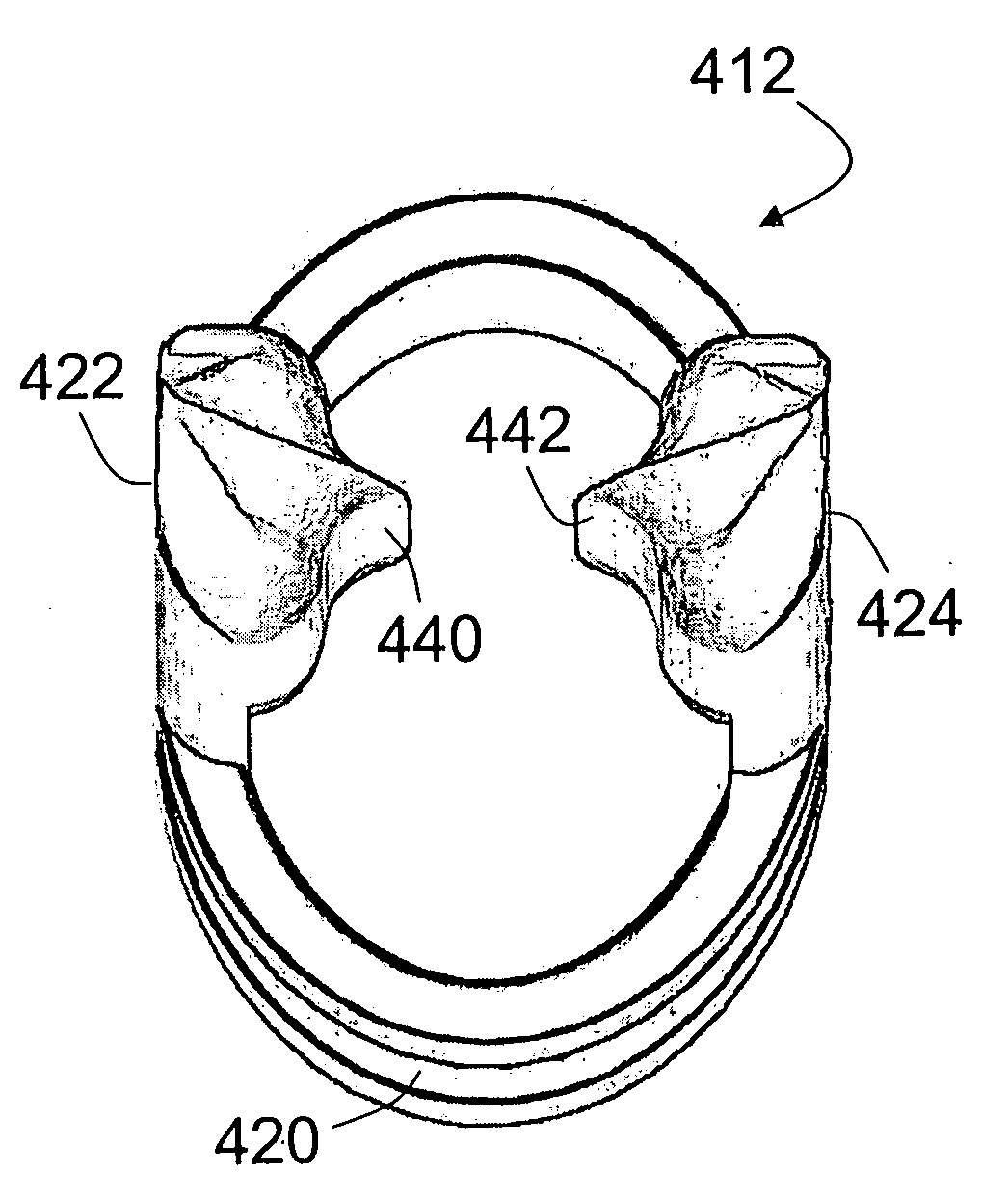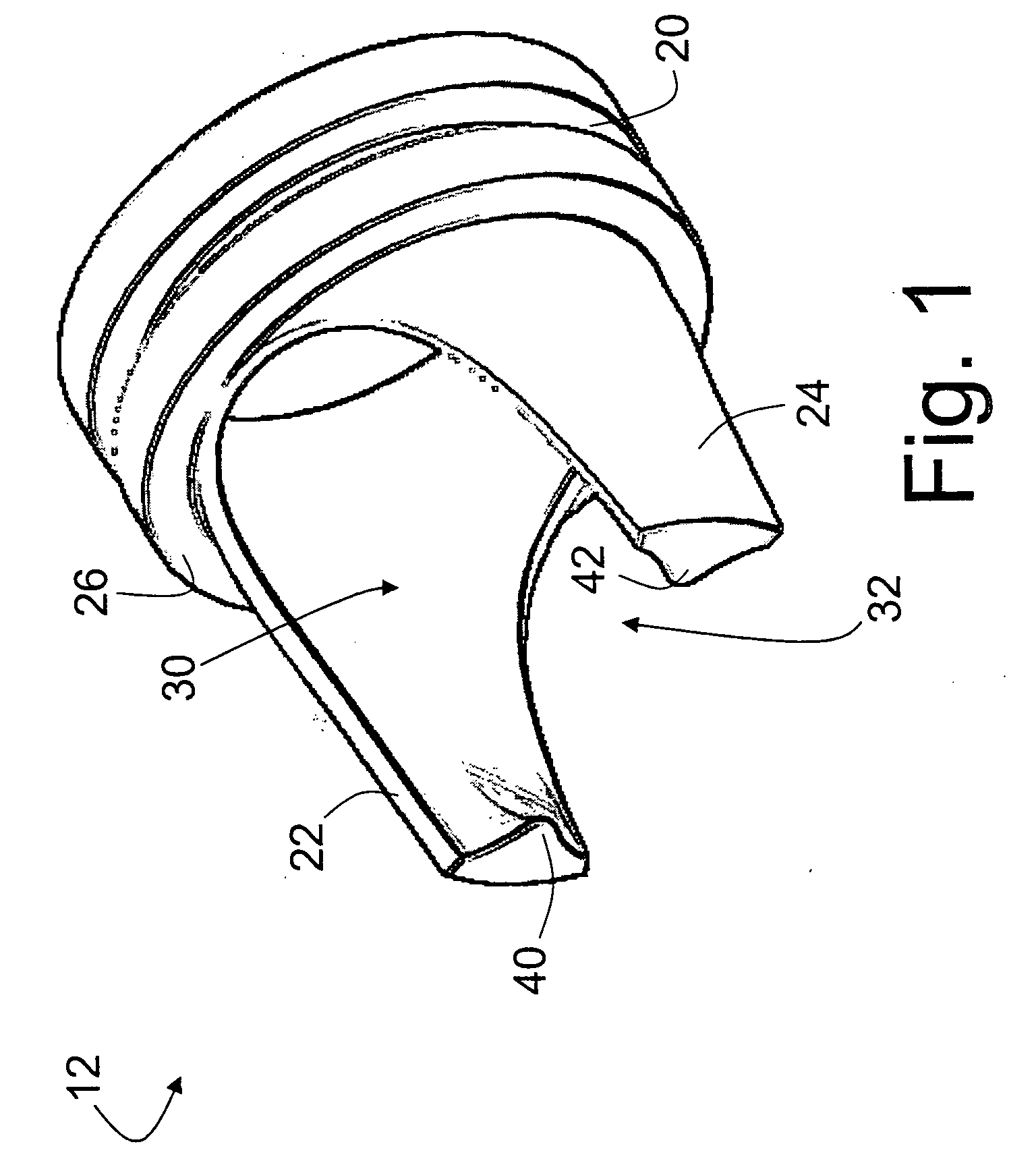Prosthetic venous valves
a technology of prosthetic venous valves and valves, applied in the field of medical arts, can solve the problems of affecting the quality of life of patients, venous hypertension, and degradation of the functionality of one or more venous valves, and achieve the effect of improving sealing
- Summary
- Abstract
- Description
- Claims
- Application Information
AI Technical Summary
Benefits of technology
Problems solved by technology
Method used
Image
Examples
Embodiment Construction
[0040] With reference to FIGS. 1, 2A, and 2B, a normally open prosthetic venous valve 10 includes a generally hollow polymer frame 12, surrounded by a flexible generally tubular leaflets member 14. The prosthetic venous valve 10 is implanted into a vein 16 (shown in phantom). When implanted, the polymer frame 12 is arranged coaxially with the vein, and the generally tubular leaflets member 14 is arranged coaxially with the vein on the outside of the generally hollow polymer frame 12, so that the prosthetic venous valve 10 does not substantially impede venous blood flowing in its normal direction F indicated in FIG. 2A.
[0041] The prosthetic venous valve 10 is secured inside the vein using substantially any medically accepted implantation procedure. In one suitable approach, a longitudinal slit 18 (indicated by a dashed line in FIG. 2A) is surgically cut into a wall of the vein 16, and the vein wall is elastically distended at the slit 18 to form a longitudinally oriented opening. Th...
PUM
 Login to View More
Login to View More Abstract
Description
Claims
Application Information
 Login to View More
Login to View More - R&D
- Intellectual Property
- Life Sciences
- Materials
- Tech Scout
- Unparalleled Data Quality
- Higher Quality Content
- 60% Fewer Hallucinations
Browse by: Latest US Patents, China's latest patents, Technical Efficacy Thesaurus, Application Domain, Technology Topic, Popular Technical Reports.
© 2025 PatSnap. All rights reserved.Legal|Privacy policy|Modern Slavery Act Transparency Statement|Sitemap|About US| Contact US: help@patsnap.com



